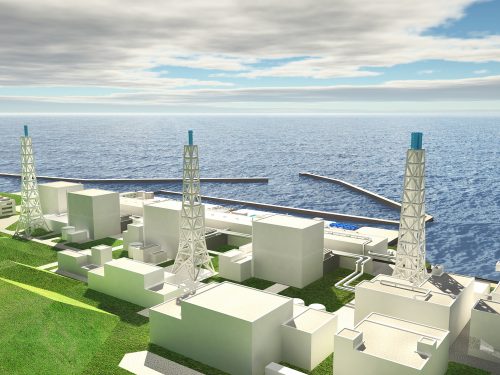A team of researchers has succeeded in developing a new chemical method for capturing uranium found in contaminated groundwater, a method that could aid in cleanup efforts at sites that were once nuclear sites.

[Translation by Dr. Nachmani Moshe]
A team of researchers has succeeded in developing a new chemical method for capturing uranium found in contaminated groundwater, a method that could aid in cleanup efforts at sites that were once nuclear sites.
The researchers from the University of Washington conducted a series of experiments in the laboratory using water contaminated with uranium - similar to the water found in contaminated groundwater at several nuclear sites in the US that were used during the Cold War with the USSR, and water obtained as part of operations to remove radioactive waste generated during the production of nuclear products.
Calcium and phosphorus work together to chemically trap uranium, a metal that has been found to increase the risk of cancer and liver damage in humans after ingestion. Previous field experiments focused on injecting a phosphorous solution at the site itself directly into the contaminated groundwater. These methods were not particularly successful in view of the fact that the activity time of the calcium, phosphorescence and uranium was limited. "The challenge in direct cleaning of underground areas is in finding the appropriate way to bring the materials required for joint activity within a system that does not mix properly," explains the lead researcher. "In the field experiments, most of the added phosphorescence did not reach the uranium at all since it already sank near the injection point. The solution is to find a way that can move the phosphorescence to the place where the uranium is found, and with the help of other methods it will be possible to bring the phosphorescence closer to the location of the pines while taking advantage of the natural flow of groundwater."
As part of three different types of experiments conducted in the laboratory, the researchers first determined the exact concentration of calcium in the water. In the next step, they were able to add a precise amount of phosphorus to obtain the calcium phosphate salt, a chemical substance capable of neutralizing and trapping the metal atoms of the uranium. The precise combination and composition of the calcium with the added phosphorus renders the uranium inactive in the groundwater while trapping it. The researchers intend to continue research to develop a method that will allow engineers to precisely adjust the injection location of the solution near the calcium deposits that are naturally found near the groundwater.
"The results of our research indicate that there is no single approach that is suitable for all cases where phosphorous solutions are used to clean uranium-contaminated groundwater," says the researcher. "Combining the knowledge about the exact location of the uranium contamination and the composition of the groundwater allows us to decide whether to directly inject the phosphorus into the uranium-contaminated groundwater or inject the solution down the direction of the flow of the uranium in order to create a barrier to the calcium phosphorus." The research findings were published in the scientific journal Environmental Science & Technology.
The news about the study

One response
An important development! In addition to cleaning up the pollution, this is also a way to extract and recycle uranium, which is an expensive and rare metal.